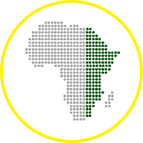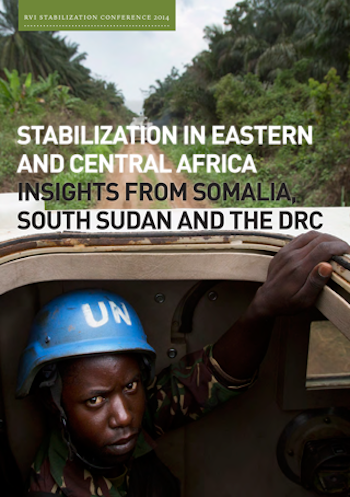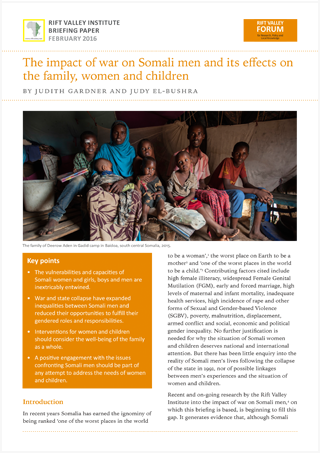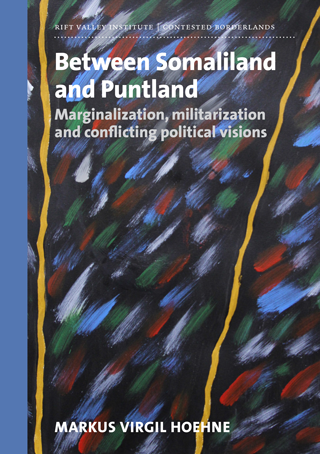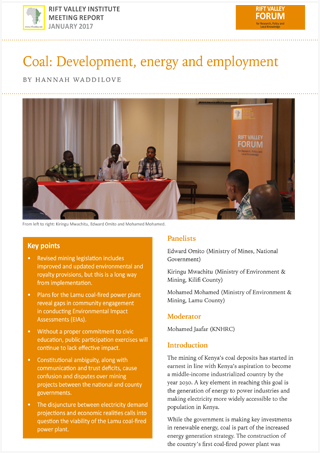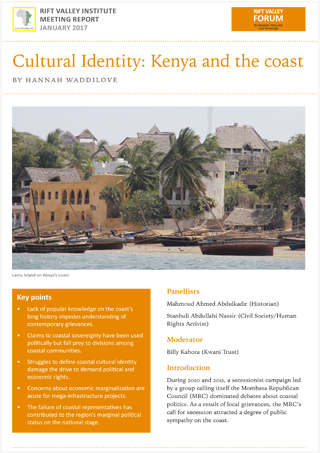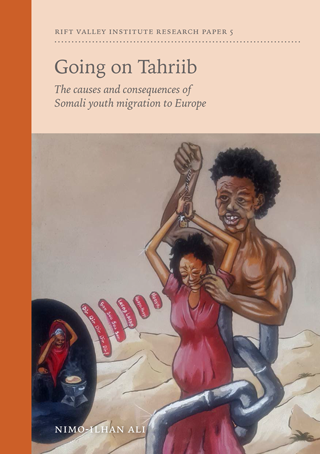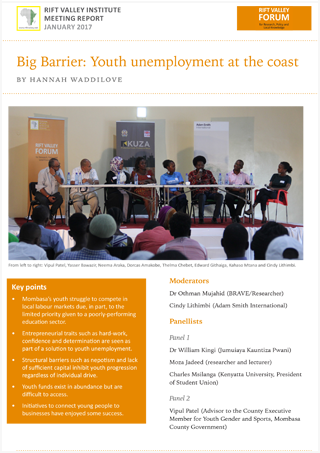‘The conference has put into perspective what stabilization means in South Sudan as opposed to what it means in Somalia and in the DRC. And putting my own insights on stabilization alongside those of the speakers here has given…
RVI publishes books, research reports, research papers, briefings and meeting reports in a range of formats. Publications cover policy, research, arts, culture and local knowledge in the countries of eastern and central Africa. Research publications—books, reports and papers—are peer-reviewed. Some RVI publications are also available in French and/or Arabic.
The RVI is a signatory of the Budapest Open Access Initiative (2001); all publications are free for download in PDF format under Creative Commons licences. The views expressed in books and reports published by the RVI are those of the authors, not the Institute.
SEARCH
PUBLICATION TYPE
LANGUAGE
REGION
COUNTRY
‘Waa sheeko ka mid ah kuwii ugu xiisaha badnaa ee aan la kulmo, oo ka warramaysa waayoaragnimada qurbaawi Soomaali ah, oo ka raadsanaya meel kale, nolol aayatiin dhaanta tan aan xasilloonayn ee geyiga Soomaalida. Akhriskeedu waxa uu ii noqdey…
Land disputes are considered both key sources and perpetuating factors of conflict in the eastern Democratic Republic of the Congo (DRC). Over the years, scholars and practitioners have identified a number of critical land-related factors contributing to violence and…
Pendant la Seconde Guerre du Congo (1998–2003), le gouvernement de la République démocratique du Congo (RDC) et la société civile congolaise ont tenté, avec le soutien de partenaires internationaux, de venir à bout des cycles consécutifs de mobilisation armée….
In recent years Somalia has earned the ignominy of being ranked ‘one of the worst places in the world to be a woman’, the worst place on Earth to be a mother and ‘one of the worst places in the world…
‘A valuable contribution to the study of borderlands and state formation. It will be of great interest to students, scholars, policymakers and donors.’ REDIE BEREKTEAB, NORDIC AFRICA INSTITUTE, UPSSALA ‘An ethnographic study of two Somali clans with in-depth analyses of…
The mining of Kenya’s coal deposits has started in earnest in line with Kenya’s aspiration to become a middle-income industrialized country by the year 2030. A key element in reaching this goal is the generation of energy to power…
During 2010 and 2011, a secessionist campaign led by a group calling itself the Mombasa Republican Council (MRC) dominated debates about coastal politics. As a result of local grievances, the MRC’s call for secession attracted a degree of public…
‘An enlightening exposé of the motives and societal pressures that spur irregular migration, in this particular case, from Somaliland and Puntland. This study could not be timelier given that people smugglers and migrant traffickers have proven themselves to be…
In Kenya, 80 per cent of the unemployed are believed to be below the age of 35. The rate of unemployment in Mombasa, Kenya’s second largest city and home to the region’s largest port, is estimated to be 44…
Recent Publications
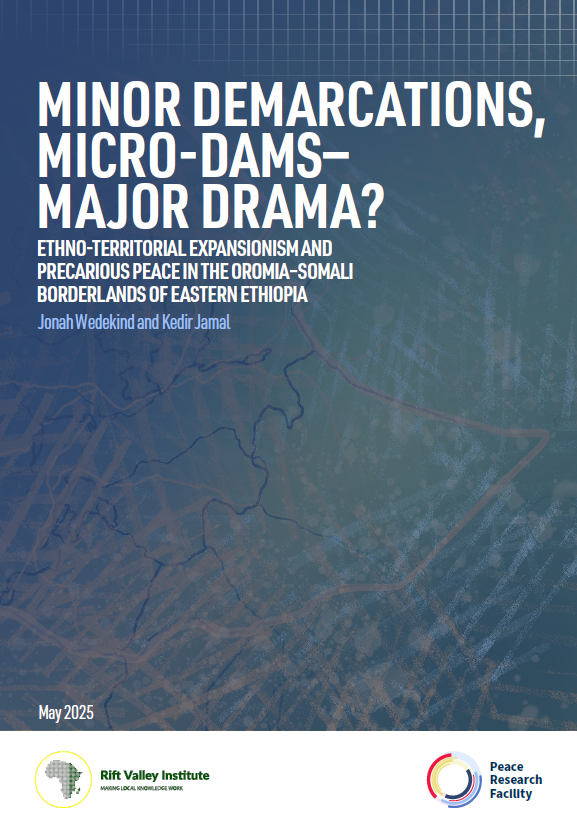
Minor Demarcations, Micro-Dams—Major Drama? Ethno-territorial expansionism and precarious peace in the Oromia–Somali borderlands of eastern Ethiopia
May 20, 2025
The report highlights the overlapping claims to and distributive struggles over territory and resources in the Oromia-Somali borderlands which animated inter-regional competition between the Oromia Regional State (ORS) and Somali Regional State (SRS), resulted in the brief 2023 uptick in
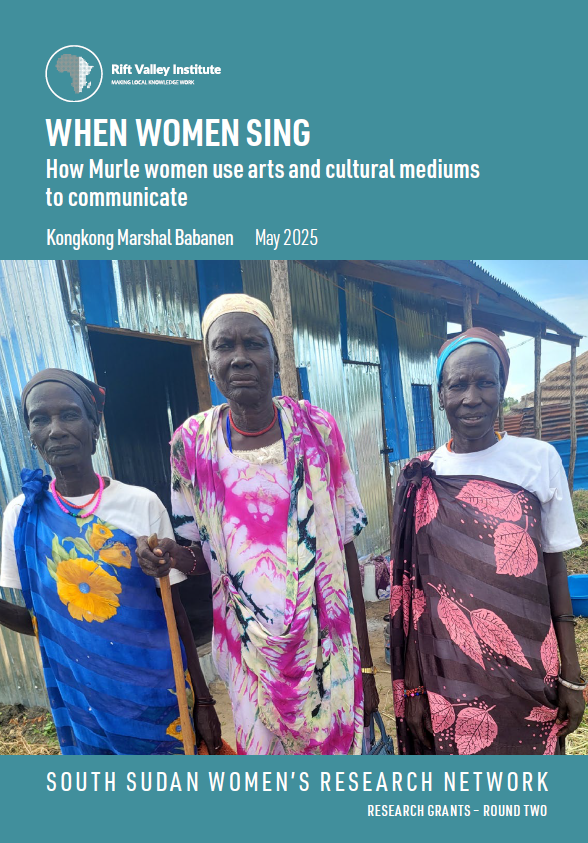
When Women Sing: How Murle women use arts and cultural mediums to communicate
May 16, 2025
This research explores how Murle women in the Greater Pibor area of central eastern South Sudan use not just songs but dance, hairstyles, body marks and beads to express themselves. Its objective is to draw attention to the ways Murle
Effectiveness of Women in Politics and Improving Gender Equality in South Sudan
May 2, 2025
This report argues that, in order to improve women’s participation in politics and promote gender-responsive policies in the country, there is a need to enlarge government capacity for women’s leadership by introducing equal gender quotas for decision-making positions. Summary Women’s
